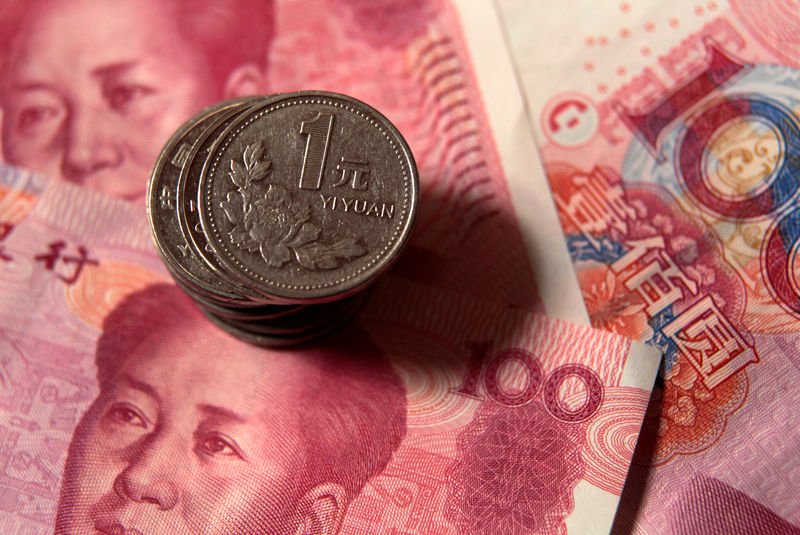 © Reuters.
© Reuters.
By Ambar Warrick
Investing.com-- China’s yuan sank to a near two-year low to the dollar on Friday, as concerns over slowing growth in the country and hawkish comments from the Federal Reserve weighed on Asian currencies.
The yuan fell as much as 0.4% to 6.8144 to the dollar, its weakest level since September 2020. The fall comes in the wake of a swathe of weak economic data from the country and a dire warning on its beleaguered real estate market.
Concerns over escalating tensions between the United States and China, as Washington and Taiwan began negotiations over a trade agreement, also weighed on Chinese markets.
The yuan, and most other Asian currencies came under increased pressure on Friday after hawkish comments from several Fed officials boosted the dollar and dented risk appetite.
Most major Asian currencies fell between 0.1% and 0.5%.
Fed members James Bullard and Mary Daly both said the central bank could raise interest rates by as much as 75 basis points in September, given that inflation has remained near 40-year highs despite easing slightly in July.
Rising interest rates in the U.S. have severely dented Asian currencies this year, given that they narrow the gap between risky and low-risk yields. This drives capital away from riskier markets in Asia and into safer bets such as the U.S. dollar and Treasuries.
The dollar index rose 0.2% on Friday, while dollar index futures also gained a similar amount. Both indicators surged 0.9% on Thursday, and were set to rise about 2% for the week.
The dollar hit a one-month high against a basket of peers, indicating that traders were likely pricing in a hawkish Fed in September.
The Japanese yen fell 0.4% to the dollar, as data showed inflation rose to an over seven-year high in July. Despite rising price pressures, the Bank of Japan has indicated that it has no plans to roll back ultra-loose monetary policy this year.
This contrasts with a path of tightening adopted by most central banks this year.
The Philippine peso fared better than its Asian peers on Friday, rising slightly after the central bank hiked rates as expected on Thursday.

